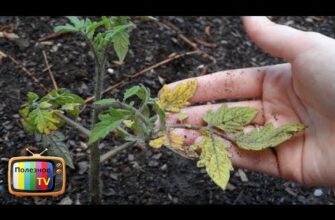- Выращивание огурца на подоконнике
- Выбор сорта огурца
- Подготовка почвы
- 1. Выбор грунта
- 2. Подготовка почвы
- 3. Глубина посева
- Посев семян
- Уход за растением
- Удаление первых огурчиков
- Почему нужно удалять первые огурчики
- Когда нужно производить удаление
- Заключение
- Обеспечение достаточного освещения
- Поливание и влажность
- Подкормка огурцов
- Поддержка растения
- Шаг 1: Удаление первых 5 огурчиков
- Шаг 2: Правильное формирование растения
- Шаг 3: Поддержка растения
- Шаг 4: Регулярный полив и подкормка
- Удаление первых молодых огурчиков
- Борьба с вредителями и болезнями
- Удаление первых молодых огурчиков
- Профилактика болезней и вредителей
- Соблюдение правил выращивания
- Сбор и использование урожая
- Вопрос-ответ:
- Как удалить первые молодые огурчики при выращивании огурца на подоконнике?
- Как правильно удалять первые молодые огурчики при выращивании огурца на подоконнике?
- Когда нужно удалять первые молодые огурчики при выращивании огурца на подоконнике?
- Почему нужно удалять первые молодые огурчики при выращивании огурца на подоконнике?
- Видео:
- 4 главные ошибки при выращивании огурца дома
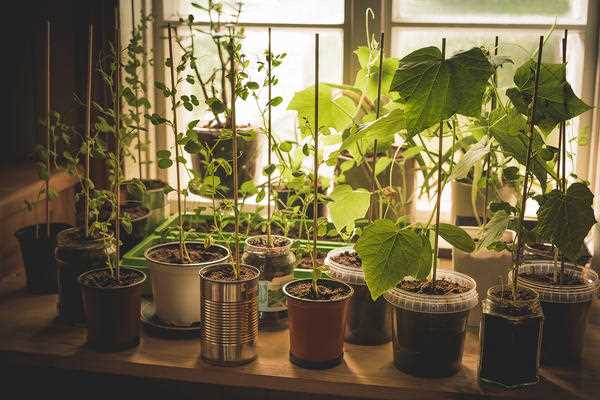
Выращивание огурца на подоконнике — это отличная возможность получить свежие овощи в любое время года. Однако, для того чтобы получить качественный и урожайный урожай, необходимо знать некоторые особенности ухода за растением. Одним из обязательных шагов в выращивании огурца является удаление первых молодых огурчиков.
Первые молодые огурчики, которые появляются на растении, не стоит оставлять, так как они отнимают у растения силы и питательные вещества. Более того, эти огурчики обычно имеют меньший размер и хуже развиты, чем последующие плоды. Поэтому их удаление поможет растению сконцентрироваться на развитии сильных и здоровых плодов.
Процесс удаления первых молодых огурчиков довольно прост. Необходимо различать молодые плоды от цветков. Молодые плоды имеют выпуклую форму и достигают длины около 5 сантиметров. Цветки же имеют более плоскую форму и находятся ближе к стеблю растения. Остается лишь аккуратно срезать молодой огурчик ножницами или острым ножом, придерживая его основание, чтобы не повредить растение.
Важно помнить, что удаление первых молодых огурчиков является обязательным шагом в выращивании огурца на подоконнике. Этот процесс не только помогает растению развиваться нормально, но и способствует увеличению урожайности огурца в будущем.
Выращивание огурца на подоконнике
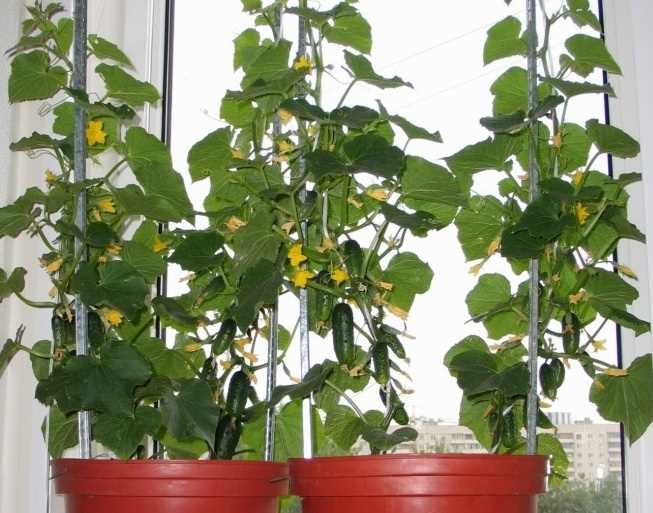
Огурец — это один из самых популярных овощных культур, который можно успешно вырастить даже на подоконнике своего дома. Это удобно, особенно для тех, у кого нет собственного сада или участка. Огурцы на подоконнике обычно выращиваются в горшках или контейнерах, которые можно легко разместить на подоконнике.
Шаг номер один в выращивании огурцов на подоконнике — посадка семян. Предварительно горшок необходимо заполнить питательной почвой. Затем семена огурца размещаются в горшке на глубину около 1-2 см. После посадки следует обильно полить горшок и установить его на подоконник, где есть доступ к свету и теплу.
Первые огурчики появляются примерно через 5-7 дней после появления всходов. Важно знать, что на данном этапе не все огурчики должны оставаться на растении. Удаление первых огурчиков является обязательным шагом при выращивании огурца на подоконнике.
Дело в том, что удаляя первые огурчики, мы позволяем растению сконцентрировать свои силы на росте и развитии. Если первые огурчики оставить на растении, то они могут забрать всю энергию и питательные вещества, не давая возможности остальным огурчикам нормально развиваться.
Итак, для успешного выращивания огурца на подоконнике необходимо удалить первые молодые огурчики. Это можно сделать осторожно отломив или отрезав их от растения. Таким образом, мы обеспечим лучший рост и развитие остальных огурчиков, которые смогут стать вкусной и полезной добавкой к нашему рациону.
Выбор сорта огурца
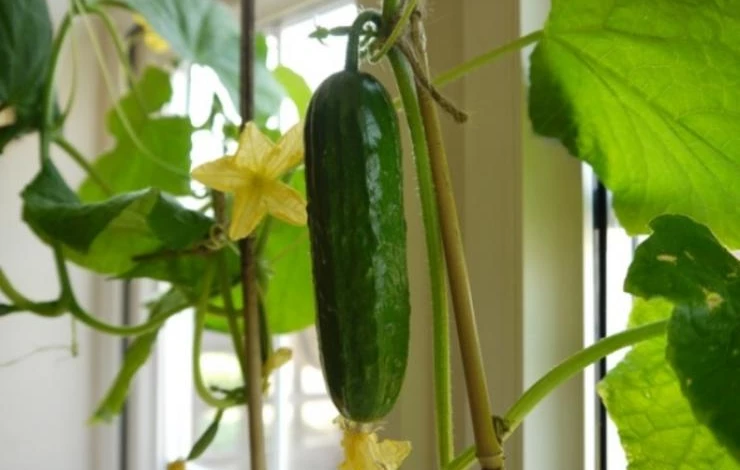
Выбор сорта огурца является обязательным шагом при выращивании огурчиков на подоконнике. От правильного выбора сорта будет зависеть как урожайность, так и качество получаемых плодов. При выборе сорта необходимо учитывать следующие факторы:
- Цель выращивания: Если вы планируете получить молодые огурцы для свежего употребления, то стоит выбирать сорта, которые обладают нежной и сочной мякотью. Если же вы хотите выращивать огурцы для консервации или длительного хранения, то лучше выбрать сорта с плотными плодами.
- Условия выращивания: Если вы собираетесь выращивать огурцы на подоконнике, то следует выбирать сорта, которые хорошо растут в условиях ограниченной освещенности. Такие сорта обычно имеют компактные кусты и быстро формируют плоды.
- Срок созревания: Если вам нужны молодые огурцы как можно скорее, то стоит выбрать сорта с коротким сроком созревания. Если же у вас есть время и вы хотите получить более крупные плоды, то можно выбрать сорта с длинным сроком созревания.
При выборе сорта огурца необходимо учитывать все эти факторы и выбрать тот, который наилучшим образом соответствует вашим потребностям и условиям выращивания.
Подготовка почвы
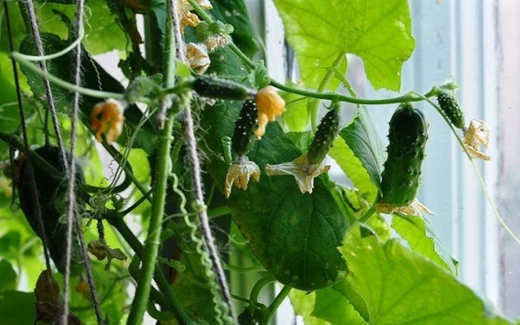
Подготовка почвы для выращивания огурцов на подоконнике является обязательным шагом для успешного развития растений. Следует учесть ряд особенностей, чтобы обеспечить рост и развитие первых молодых огурчиков.
1. Выбор грунта
Для выращивания огурцов лучше всего подходит плодородный грунт, богатый органическими веществами. Рекомендуется использовать специальную смесь для огурцов, которую можно приобрести в магазине или приготовить самостоятельно, смешав песок, торф и перегной.
2. Подготовка почвы
Перед посевом огурцов необходимо провести подготовку почвы. Для этого ее следует просеять, чтобы удалить крупные комки и камни. Затем почву следует пролить теплой водой, чтобы увлажнить ее равномерно.
3. Глубина посева
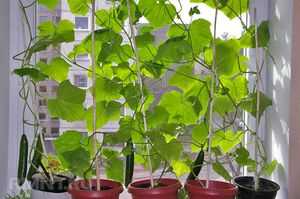
Огурцы следует сеять на глубину примерно 5 сантиметров. Это позволит растениям легко прорастать и выходить на поверхность. После посева необходимо покрыть почву пленкой или стеклом для создания парниковых условий.
Следуя этим рекомендациям, можно обеспечить оптимальные условия для выращивания огурцов на подоконнике и успешно удалить первые молодые огурчики, которые будут радовать своим вкусом и полезными свойствами.
Посев семян
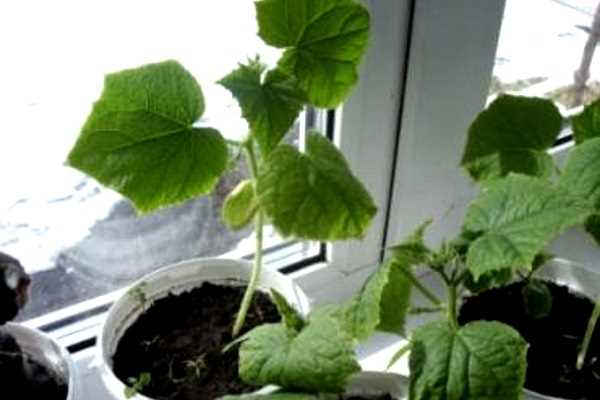
Для успешного выращивания молодых огурцов на подоконнике необходимо правильно провести посев семян. Этот шаг является обязательным и определяет дальнейший успех культивации растений.
Первым шагом необходимо выбрать сорт огурца, учитывая особенности выращивания на подоконнике. От выбора сорта будет зависеть размер и количество плодов, а также их вкусовые качества.
При посеве семян огурца в горшки или контейнеры, следует учесть, что для успешного развития растения необходимо обеспечить оптимальные условия: свет, тепло и влажность.
Огурцы требуют тепла и света для прорастания семян, поэтому рекомендуется размещать горшки с семенами на подоконнике с южной стороны или использовать дополнительное искусственное освещение. Важно помнить, что недостаток света может привести к вытягиванию растений и их слабому развитию.
Посев семян огурца следует проводить на глубину примерно 1-2 см. Рекомендуется размещать семена на расстоянии около 5 см друг от друга, чтобы предотвратить их соприкосновение и возможное заражение болезнями.
После посева семян необходимо обеспечить регулярное поливание и поддерживать оптимальную влажность почвы для прорастания. При появлении первых молодых огурчиков необходимо удалить лишние растения, чтобы обеспечить оптимальный доступ к свету и питательным веществам для оставшихся растений.
Уход за растением
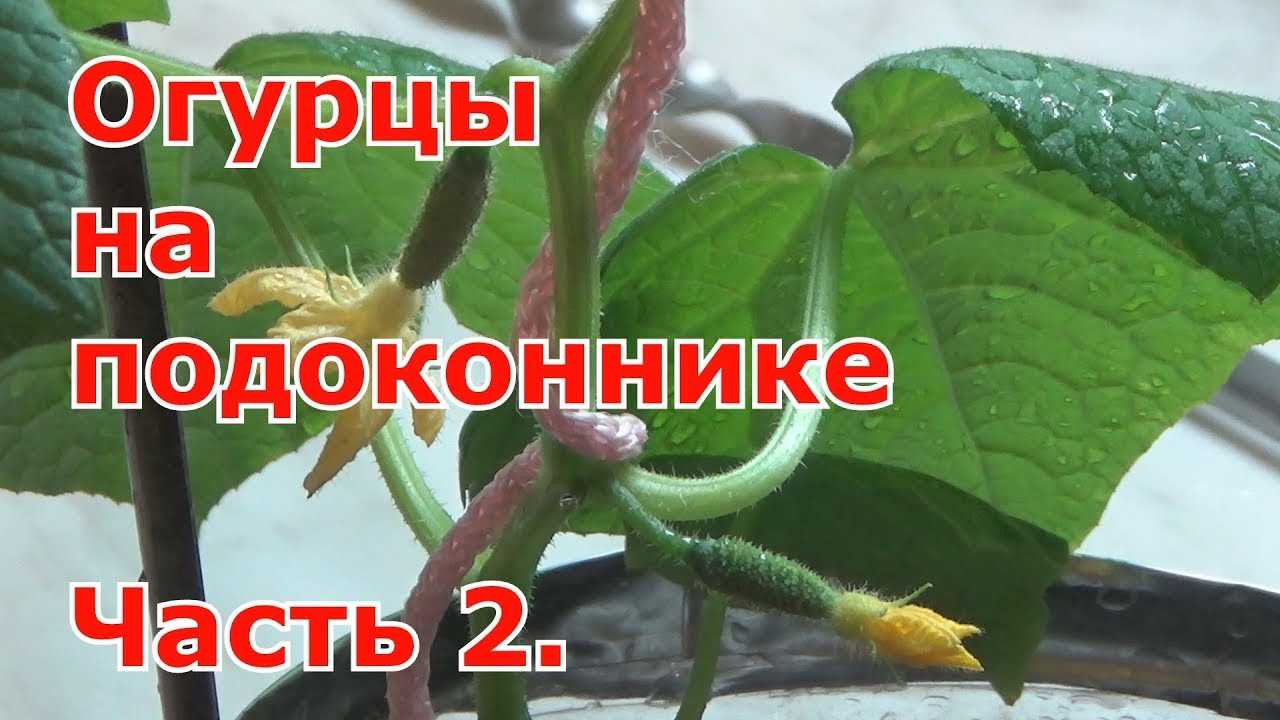
При выращивании огурцов на подоконнике необходимо обязательное удаление первых молодых огурчиков. Это позволит растению распределить энергию и питательные вещества для развития более крупных и зрелых плодов.
Удаление первых огурчиков
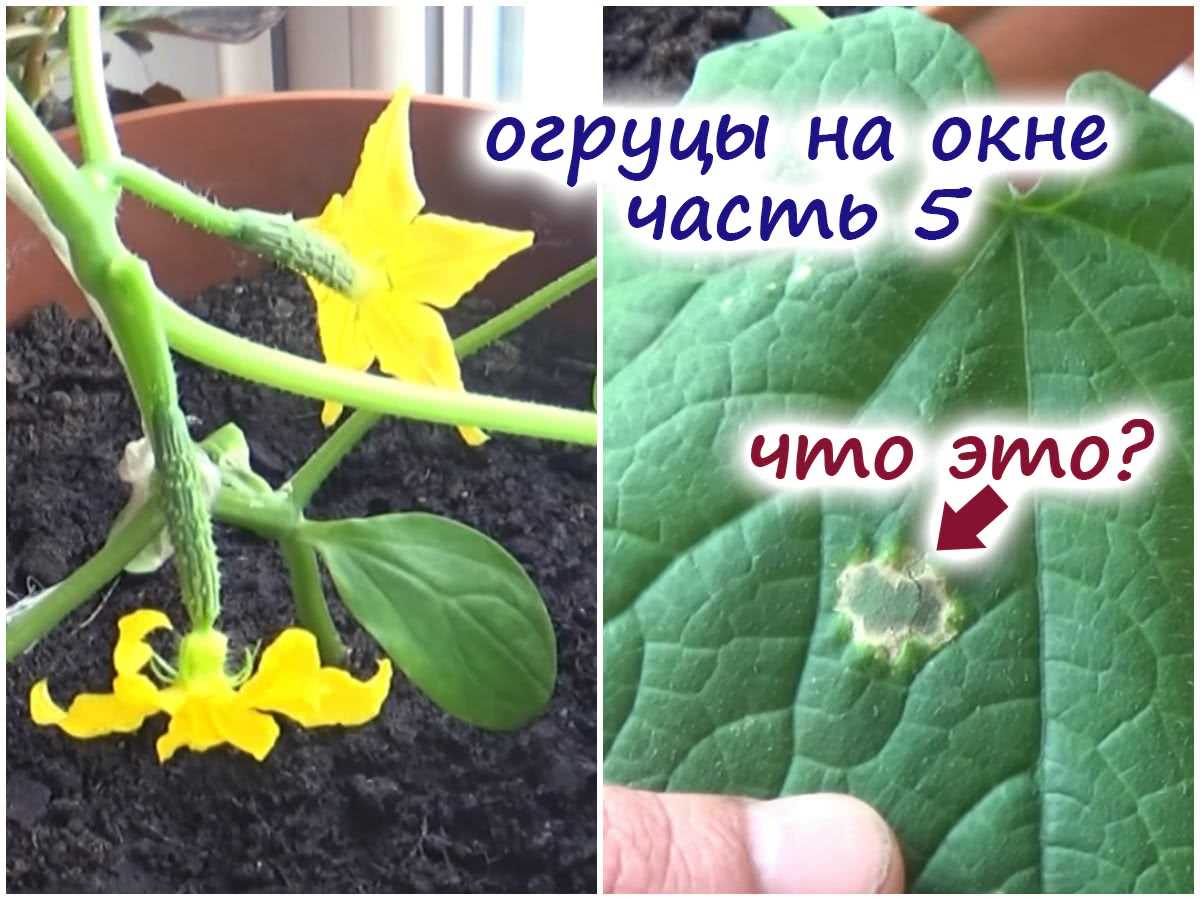
Первые огурцы, которые начинают появляться на растении, называются молодыми огурчиками. Чтобы растение не тратило свои ресурсы на их развитие, рекомендуется удалить их. Это можно сделать, аккуратно отламывая огурчики или срезая их острым ножом.
Почему нужно удалять первые огурчики
Удаление первых молодых огурчиков поможет растению сосредоточиться на развитии более крупных и зрелых плодов. Когда растение оставляет все свои усилия на развитие первых огурчиков, они могут оказаться небольшими и некачественными. Удаление их позволит растению сконцентрировать все свои ресурсы на развитии более здоровых и вкусных плодов.
Когда нужно производить удаление
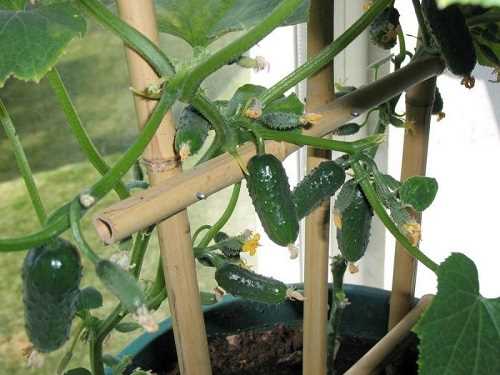
Обычно удаление первых молодых огурчиков производится, когда на растении появляются 5-6 настоящих листьев. В этот момент растение достаточно сильное и может выдержать удаление огурчиков без особых проблем. Однако, не стоит затягивать с этой процедурой, так как с ростом растения удалять огурчики становится сложнее и возникает риск повреждения основного стебля.
Заключение

Уход за растением огурца на подоконнике включает в себя обязательное удаление первых молодых огурчиков. Это позволяет растению сосредоточиться на развитии более крупных и качественных плодов. Удаление огурчиков следует проводить, когда на растении появляется достаточное количество настоящих листьев. Отсутствие первых огурчиков способствует развитию здоровых и вкусных плодов.
Обеспечение достаточного освещения
Для успешного выращивания первых молодых огурчиков на подоконнике необходимо обязательное обеспечение достаточного освещения. Огурцы являются светолюбивыми растениями, и для их полноценного развития требуется яркий свет.
Так стоп!!! Вы всё ещё не подписаны на наши каналы в Телеграмм и Дзен? Посмотрите: ТГ - (@historyfantasydetectivechat) и Дзен (https://dzen.ru/myshortsstorys)
Подоконник, на котором выращиваются огурчики, должен находиться в месте с хорошим освещением. Лучше всего выбрать солнечную сторону помещения, где солнечные лучи падают непосредственно на растения.
Если естественного света недостаточно, можно использовать искусственное освещение. Для этого подходят специальные фитолампы, которые поддерживают оптимальный уровень освещенности для растений. Расположите фитолампу так, чтобы она равномерно освещала все огурцы.
Длительность освещения также играет важную роль. Для молодых огурцов рекомендуется обеспечивать 12-14 часов светового дня. Для этого можно использовать таймер, который будет автоматически включать и выключать освещение в нужное время.
Обеспечивая достаточное освещение, можно существенно улучшить рост и развитие огурцов на подоконнике. Удаление первых молодых огурчиков станет проще и результативнее при оптимальных условиях освещения.
Поливание и влажность
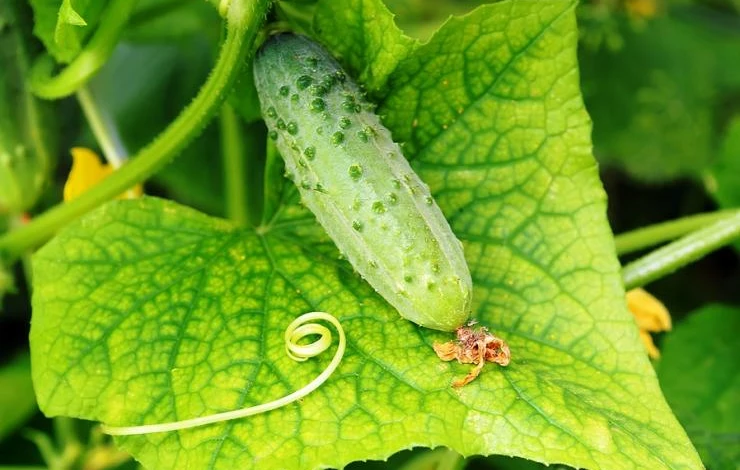
Одним из важных шагов при выращивании огурцов на подоконнике является правильное поливание и поддержание оптимальной влажности. Это обязательное условие для успешного развития и роста огурчиков.
Огурцы нуждаются в регулярном поливе, особенно в период их активного роста. Идеальная частота полива составляет около 2-3 раз в неделю. Важно помнить, что огурцы не любят переувлажнения, поэтому следует поддерживать умеренную влажность почвы. Для оценки необходимости полива можно провести простой тест: вставить палец на глубину около 5 см и оценить влажность почвы. Если она сухая, то следует провести полив.
Помимо полива, следует обратить внимание на уровень влажности воздуха. Огурцы предпочитают влажную атмосферу для оптимального роста. Для поддержания подходящих условий можно использовать различные методы: распылители воды, увлажнители воздуха или размещение под вазу с водой. Также можно использовать поддон с влажным грунтом или камнями, на которые будет поступать вода из поддона, увлажняя воздух около растений.
Важно помнить, что слишком высокая влажность может привести к развитию грибковых заболеваний, поэтому следует избегать слишком интенсивного полива и регулярно проветривать помещение.
Подкормка огурцов

Огурцы, выращиваемые на подоконнике, требуют особой заботы и внимания. Одним из важных шагов в уходе за молодыми растениями является подкормка, которая способствует их здоровому росту и развитию.
Обязательное условие для подкормки огурцов – это удаление первых молодых огурчиков, которые появляются на растении. Это необходимо сделать для того, чтобы огурцы не тратили свою энергию на формирование плодов и могли полноценно развиваться.
Удаление огурчиков производится вручную, аккуратно отрывая их от стебля. Этот процесс также способствует формированию более крупных и здоровых плодов.
Однако, после удаления молодых огурчиков, растения нуждаются в дополнительном питании. Для этого можно использовать специальные удобрения, содержащие необходимые микроэлементы и питательные вещества.
Рекомендуется проводить подкормку огурцов раз в 5-7 дней. Для этого можно использовать готовые удобрения, разбавленные в воде, или приготовить раствор из натуральных компонентов, таких как перегной или птичий помет.
Помимо подкормки, растения также нуждаются в правильном поливе, доступе к свету и умеренной температуре. Соблюдение всех этих условий позволит получить красивые и вкусные огурцы даже на подоконнике.
Поддержка растения
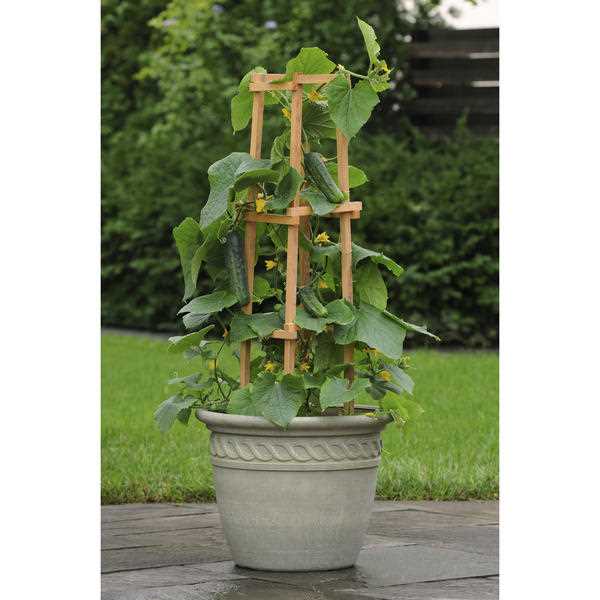
Шаг 1: Удаление первых 5 огурчиков
Обязательное действие при выращивании огурцов на подоконнике — удаление первых 5 огурчиков. Это необходимо для того, чтобы у растения была возможность правильно сформировать основной стебель и корневую систему.
Шаг 2: Правильное формирование растения
Огурец на подоконнике нужно отсадить в отдельный горшок или контейнер, чтобы он имел достаточно места для развития. Поставьте горшок на подставку или поддон, чтобы избежать скопления влаги под горшком.
Шаг 3: Поддержка растения

Для поддержки растения можно использовать вертикальные опоры, например, палочки или специальные сетки. Это поможет огурцу прямо расти вверх, что позволит сэкономить место на подоконнике и обеспечить правильное получение света и воздуха.
Шаг 4: Регулярный полив и подкормка
Огурцы на подоконнике нуждаются в регулярном поливе и подкормке. Поливайте растение умеренно, чтобы избежать переувлажнения почвы. Подкормку можно проводить раз в 1-2 недели, используя специальные удобрения для огурцов.
Удаление первых молодых огурчиков
Выращивание огурцов на подоконнике является популярным способом получить свежие овощи даже в городских условиях. Однако, для успешного развития огурца на подоконнике требуется провести определенные процедуры, такие как удаление первых молодых огурчиков.
Первые молодые огурчики, появляющиеся на растении, обладают низким качеством и несовершенной формой. Чтобы обеспечить лучший урожай и качественные огурцы, обязательным шагом является удаление этих первых молодых плодов.
Удаление первых молодых огурчиков необходимо проводить в самом начале их появления. Для этого рекомендуется использовать острые садовые ножницы или нож для точных работ. Срезайте огурчики как можно ближе к стеблю растения, чтобы не повредить другие плоды и не оставить зачатки вредителей.
Удаление первых молодых огурчиков позволяет растению сосредоточить свои силы на развитии качественных и более крупных огурцов. Также это снижает риск возникновения болезней и повышает урожайность растения.
Борьба с вредителями и болезнями
Удаление первых молодых огурчиков
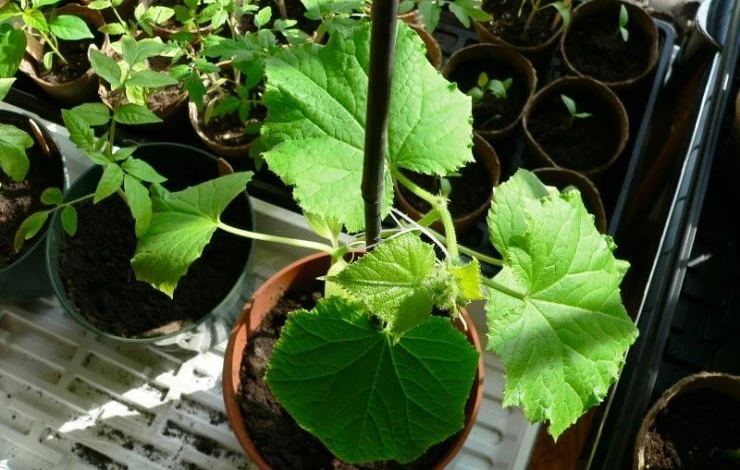
При выращивании огурца на подоконнике, удаление первых молодых огурчиков является обязательным шагом. Это позволит сохранить здоровье и силу растения, так как первые плоды часто имеют недостаточно развитую корневую систему и могут быть подвержены болезням и вредителям.
Профилактика болезней и вредителей
Для профилактики болезней и вредителей, рекомендуется регулярно осматривать растение на наличие пятен, паутинки и других признаков заболевания. В случае обнаружения, необходимо принять меры по их предотвращению. Также полезно проводить регулярные обработки средствами защиты от вредителей, такими как насекомые и грибки.
Соблюдение правил выращивания
Для устойчивости растения к болезням и вредителям, необходимо соблюдать оптимальные условия выращивания. Оптимальные условия включают в себя правильное поливание, обеспечение достаточного освещения и температурного режима, а также регулярное подкормление растения. Также важно соблюдать правила санитарной обрезки растений и удаление пораженных частей.
Сбор и использование урожая
Один из главных этапов выращивания огурца на подоконнике — сбор молодых огурчиков. Это процесс, который требует определенных знаний и навыков. Первый шаг в сборе урожая — определение момента его созревания.
Удаление первых молодых огурчиков — обязательное действие для успешного выращивания огурца на подоконнике. Сразу после появления первых плодов, необходимо удалить их, чтобы огурец смог зреть настолько, насколько это возможно.
Желательно проводить удаление молодых огурчиков не реже, чем раз в 5 дней. Это позволит поддерживать активное развитие растения и способствовать образованию новых плодов. Удаление огурчиков следует проводить аккуратно, чтобы не повредить стебель.
После удаления молодых огурчиков, их можно использовать в кулинарии. Они великолепно подходят для приготовления свежих салатов, закусок и маринования. Молодые огурчики обладают нежной текстурой и освежающим вкусом, что делает их незаменимым ингредиентом в летних блюдах.
Вопрос-ответ:
Как удалить первые молодые огурчики при выращивании огурца на подоконнике?
Чтобы удалить первые молодые огурчики при выращивании огурца на подоконнике, нужно аккуратно оборвать их основание при помощи острых ножниц или ножа. Это нужно сделать, чтобы побудить растение к дальнейшему росту и развитию. Удаление первых молодых огурчиков позволяет огурцу сконцентрировать свои силы на формировании более крупных плодов.
Как правильно удалять первые молодые огурчики при выращивании огурца на подоконнике?
Для правильного удаления первых молодых огурчиков при выращивании огурца на подоконнике, следует соблюдать несколько шагов. Во-первых, огурцы должны достигнуть определенного размера — около 5-7 сантиметров. Затем, при помощи острых ножниц или ножа, аккуратно обрежьте основание огурчика. При этом старайтесь не повредить стебель растения. После удаления молодых огурчиков, растение продолжит расти и развиваться, формируя большие и вкусные плоды.
Когда нужно удалять первые молодые огурчики при выращивании огурца на подоконнике?
Первые молодые огурчики при выращивании огурца на подоконнике следует удалять, когда они достигнут определенного размера — около 5-7 сантиметров. Это обычно происходит через 2-3 недели после появления побегов. Удаление молодых огурчиков в этот момент позволяет огурцу сконцентрировать свои силы на росте и развитии, а также формировании более крупных плодов.
Почему нужно удалять первые молодые огурчики при выращивании огурца на подоконнике?
Удаление первых молодых огурчиков при выращивании огурца на подоконнике необходимо для стимулирования дальнейшего роста и развития растения. Когда огурцы достигают определенного размера — около 5-7 сантиметров, их удаляют, чтобы огурец сконцентрировал свои силы на формировании более крупных и сочных плодов. Также, удаление молодых огурчиков позволяет предотвратить перегрузку растения и улучшить его общую жизнеспособность.


